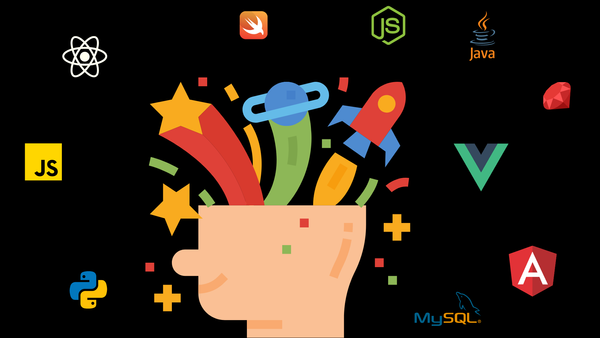Sometimes you end up with a game plan that looks flawless on paper. However, when it comes to implementation, this can end up as a completely different story.
Developers, marketing, commercial, and management say and see different things — each with their own perspectives on why things have fallen wayside and you’re delayed by six months.
The process of software development is a fine art that needs to be coordinated — but sometimes coordination alone is not enough.
Bottlenecks in the workflow occur when there is an over-supply of work in a particular area and the worker is unable to output the required load.
The most common solution to this is to add more workers. However, this can further increase the severity of the problem.
On the surface, it looks like an input-output equation but most of the time, bottlenecks occur because of a deeper issue. Adding more people won’t fix the underlying problem.
Here are three questions to ask that can help you uncover the root cause of bottlenecks in software development.
1. What Are Your Developers Doing?
You’ve got a team — but the team isn’t producing, or isn’t producing at the velocity you need.
The first question to ask is: “What are your developers doing? What are their tasks? Who has ownership over what?”
Sometimes, you’ll find that team members don’t have clearly defined goals, roles, or lists of upcoming tasks, that they’re not quite sure what the scope of their work is and where their personal responsibilities end.
Adding more developers won’t fix this issue and will only exacerbate the problem further.
How to fix this:
Clear domains of responsibility are required.
If boundaries are fuzzy, developers become a liable resource where output capacity can be reduced due to other domains pulling at their time.
Having clear domains of responsibility can also help you identify if a particular individual or group of developers are taking on more tasks than they’re capable of producing, at the velocity you need.
This will allow you to figure out who in your team is being under-utilized and who has all the systems’ knowledge and power.
Once this is identified, knowledge can then be redistributed and this will de-risk your software from being solely dependent on a single developer or group of developers.
2. What Is the Nature of Your System’s Architecture?
Contrary to popular belief, once it’s built, it’s not completed.
As much as a business wants to believe that, once they’ve put money down for software development, a whole and fully completed product is delivered.
What is actually delivered is a working product that ages and will need to be maintained in some form. Even new builds come with their own special brand of issues.
When you’re asking about the nature of your system’s architecture, you’re looking to see how the data is structured — is it in a form that is conducive to growth? Are there too many requirements to get it to work? How automated are the processes?
If your system’s architecture is too rigid or flaky, your software and its development processes become restricted and constricted by the architecture’s requirements.
Being too ‘open’ and ‘flexible’ can also pose a problem as it isn’t accurate support for the business in its data requirements and processes. Being too ‘flexible’ creates vague domains and definitions, which means that the system isn’t quite geared to produce anything in particular.
How to fix:
This is a technical issue that needs to be resolved from the ground up. This means going right back to the beginning, figuring out exactly what your business needs and wants, then restructure your system’s architecture in a way that supports this.
It may result in a database revamp and back-end rebuild to match. While it may feel like you’re scraping an entire system and that it’s very costly upfront, this initial system investment is required to unclog the current system and free it from being the bottleneck in your business and services delivery.
3. Who Is Making the Decisions?
Bottlenecks in software development often arise due to indecision and shifting requirements.
When there is no clear direction or decision, software cannot be delivered because there’s no metric or requirement to deliver against. In instances of agile, clarity is still required. Without this, there is no focus and tasks cannot be properly set up.
Making decisions is one of the first things that need to be done for developers to create effective code. This is because it gives them the capacity to efficiently translate requirements into ‘computer speak’.
If requirements are flaky, their code will also be flaky and prone to bugs due to no fault of their own.
How to fix:
Before anyone hires a software development team or tells developers to start coding — make a decision.
Clarify your vision, figure out how your software is going to be a strategy stepping stone towards this vision, and figure out what the essential and first requirement features are.
Your vision is your endgame and software is the digital asset that’s going to help you get there.
Having meetings about your software is also not enough. Decisions have to be made. They don’t have to be big decisions — just ones that you can stick to for a certain period of time until it’s delivered.
Nothing is more disheartening for developers than to find out that they have to abandon ship for the fifth time in a row because upper management is fickle and cannot stick to one thing long enough for it to be delivered.
Final Words
Software development is a process.
Bottlenecks often occur on a human level because there’s a lack of clarity. Architectural complexity is often the root cause on a software level. ‘Flexible’ software is complexity in disguise.
Most of the time, a bottleneck falls into one or multiple of these categories. Being able to identify and create clarity is akin to unclogging a blocked drain. When the flow of work cannot effectively move through the process, nothing substantial can truly be delivered.
These three questions represent three very common scenarios that exist, regardless of industry — and can be the starting point in identifying your software development bottlenecks.







